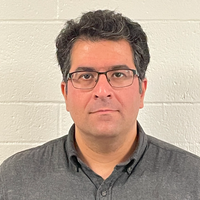My research interests, broadly speaking, fall in the area of ultrafast physics. Part of my focus is on ultrafast electron diffraction (UED), where femtosecond pulses of free electrons, produced in a high-vacuum chamber through the photoelectric effect, undergo scattering from solid crystalline samples. This enables us to study various fundamental phenomena at the atomic scale within sub-picosecond time intervals. We are constructing a new compact electron gun vacuum chamber for high-resolution UED experiments with enhanced signal-to-noise ratios.
I am also involved with a collaborative effort aimed at developing a non-invasive surgical scalpel driven by specifically designed laser pulses to access cancer anywhere in the body. On top of this, through another collaborative effort, I am invested in research on using this same tool in order to tackle neurodegenerative diseases such as Parkinson’s and Alzheimer’s.
I earned my PhD in Physics & Astronomy at the University of Nebraska-Lincoln, USA, where I worked on electron/electron coincidence experiments using ultrafast few-electron pulses to detect mutual Coulomb and Pauli force repulsive effects, and also developed a plasmonic fiber-optic-based electron nanotip source in collaboration with colleagues at the Oak Ridge National Laboratory. I continued work as a postdoctoral researcher in the same department for two years before coming to the University of Toronto, focused on developing GaAs-based ultrashort nanotip sources of spin-polarized free electrons (e.g. by ion-beam-milling) to be characterized by Mott electron-nuclear scattering. I earned my B.Sc. in Physics from the University of Tehran, and M.Sc. in Photonics from the Laser and Plasma Research Institute, Beheshti University, Tehran, Iran.

